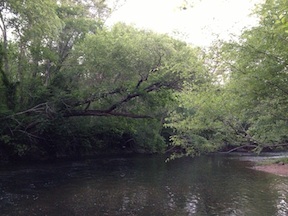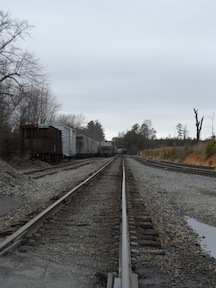The Race to North Anna Begins

“Every intelligent enlisted man in the Army of the Potomac knew that we could not wrest the Confederate intrenchments at Spotsylvania from Lee’s veteran infantry,” a Union private announced. Ulysses S. Grant knew it, too. His failed assaults on May 18 convinced him that his time in Spotsylvania had come to an end. He could not dislodge Lee. To do so would be “impractical,” confided George Gordon Meade.
A New York Times correspondent put it more bluntly: “[T]he position could not be carried save by an expenditure of blood out of all proportion to the results of any possible victory that couple be achieved there.”
As Grant had vowed earlier in the month, though, there would be no turning back. “This was no time for repining,” Grant later said.
So, as he had done at the Wilderness, he planned to once more go around.
As he considered his options, Grant looked to his right—Lee’s left—but a move in that direction would only take him toward the more thickly forested area around Gordonsville. With the thick forests of the Wilderness fresh in his mind, Grant nixed that idea pretty quickly.

A move to his left, on the other hand—Lee’s right—would enable Grant to target the railroads around Hanover Junction just beyond the North Anna River. At Hanover Junction, the Virginia Central Railroad from the Shenandoah Valley linked with the Fredericksburg, Richmond, and Potomac Railroad that ran north-south and supplied Lee’s army. A move in that direction would also let Grant continue to take advantage of the new supply line he’d established through Fredericksburg.
On the afternoon of May 18, Grant began to draw up plans for his flanking maneuver—another left-and-south move—with the intention of starting following night, May 19. Richard Ewell’s attack at Harris Farm, though, caused a postponement in the Federal departure. Grant spent the following day, May 20, keeping a wary eye on Robert E Lee’s army, waiting for any further Confederate shenanigans, but none came.

So, that evening, Grant ordered Winfield Scott Hancock’s II Corps to begin the move out of Spotsylvania. At about 10:00 p.m., Hancock’s 20,000 men—most of them deeply battle weary—set out on their mission.
Grant’s plan called for Hancock to march quickly to the southeast in a wide arc that would take him to Guiney Station and then Bowling Green, some twenty miles away. Isolated, Hancock would then dangle as bait. With any luck, Grant hoped the aggressive Lee would reach out and try to crush Hancock. When he did, Grant would pounce with the rest of the army.
In preparation, the V Corps was to get into position. Grant planned to send them down the Massaponax Church Road to the Telegraph Road and, there, march south, securing the road for the rest of the army. The Union VI and IX Corps would put up a front for Lee at Spotsylvania and then bring up the rear of the march. Even if Lee didn’t take the II Corps’s bait, Grant still intended to be well-positioned for a drive to the North Anna River and Hanover Junction beyond. Lee would have to react to the Federal movement somehow—with any luck, by coming out into the open where Grant could get at him.
“Not a man in the group I was with believed that the movement would be successful,” one New York private said. “But whether the movement would be successful for not, it was the only thing to be done, unless it were to return to the camps north of the Rapidan.”
But there would be no turning back. The race to the North Anna was on, and not only did Grant have a head start, Lee didn’t even realize the race had begun.
1 Response to The Race to North Anna Begins